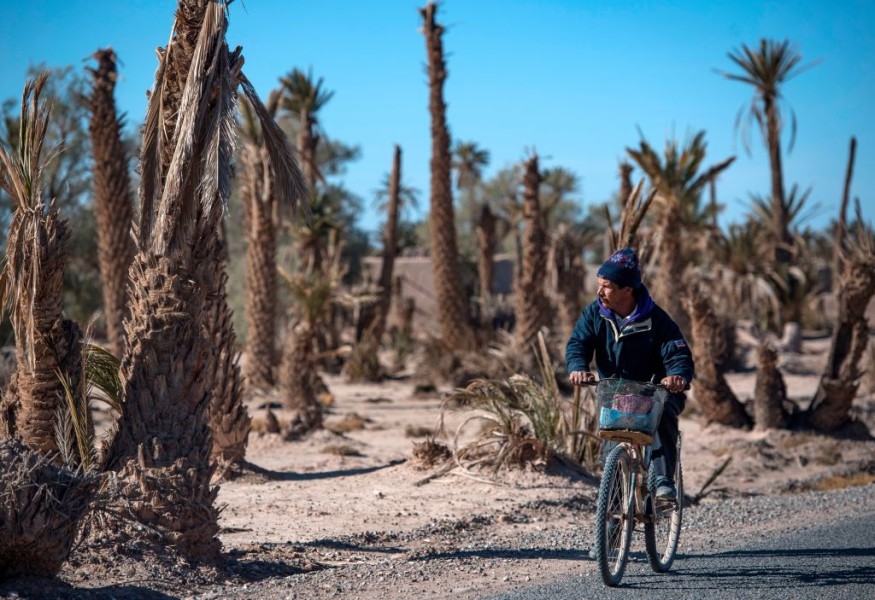
Due to drought and climate change, the century-old palm trees in Morocco's iconic oasis are either drying up or are already barren.
Residents of Alnif, an oasis, claim that they have never experienced a drought this severe. Many wells are bare. Palm groves that are more than a century old are bare.
Century-Old Palm Trees
This area, located approximately 170 miles southeast of Marrakesh and is a sanctuary to centuries-old oases that have served as a symbol of Morocco, is suffering from the impacts of climate change, which has caused an emergency for the nation's agriculture.
Hammou Ben Ady, a Tinghir area nomad who drives his herd of goats and sheep in search of grazing grass, is one of those impacted. He had to rely on government distributions of fodder because of the drought.
Marching for the Planet
In Alnif, November is typically a cold and rainy month, but when it didn't rain, the king ordered nationwide rain prayers, as is customary in the Islamic faith during periods of extreme aridity.
According to local Mo'chi Ahmad, the oasis has supported this community's way of life for hundreds of years. Now that the oasis is in danger of disappearing, everyone has become aware of the disappearing palm trees.
According to Lens Culture, Greenpeace warned of the extinction threat facing oases in 2019 due to the significant impact that high temperatures have had on their water resources, which has resulted in a reduction in livestock and agricultural activities and the relocation of indigenous populations. The organization claims that over the previous years twenty to forty years, the frequency of droughts in Morocco has increased from once every five years to once in two years.
Three Years of Drought & Taking Advantage
According to Mohamed Bozama, another resident, hundreds of residents of the oasis have fled to cities in the last three years, and many young people have immigrated to Europe. This migration is primarily the result of the drought. He also attributes the crisis escalation to the drilling of unauthorized wells and an increase in the demand for water from already-existing wells.
Another local, Hassan Bouazza, stated that adapting to the situation is essential, as is thinking of ways to use the heat and drought to the advantage of the local populace, such as by using solar power and new irrigation systems. He demanded that training be made available to oasis residents to assist them in switching from conventional irrigation to drip irrigation, which uses significantly less water.
Because of how the current generation of people is treating Mother Earth, Bouazza compared the situation to that of a young child clutching a dying bird in his hand and doing nothing but laughing, AP News reports.
Oasis in Morocco
According to the Moroccan National Tourism Office, oases are a component of Morocco's natural wealth. The largest oasis in the world, Tafilalet, is located there and covers an area of 77,000 km2.
These oases are dispersed across the cities of Erfoud and Rissani and are found in the wadis Ziz and Ghéris lower valleys.
This oasis in the middle of the desert, which is traversed by the wadi Ziz, is divided into about twenty communes and is located between the towns of Erfoud and Rissani.
© 2025 NatureWorldNews.com All rights reserved. Do not reproduce without permission.





